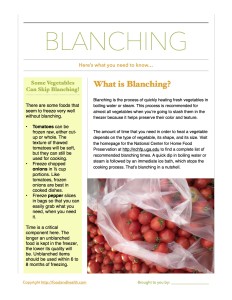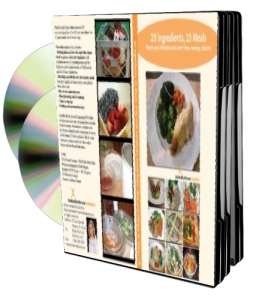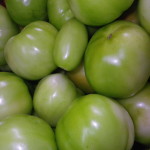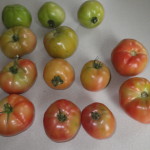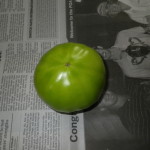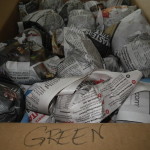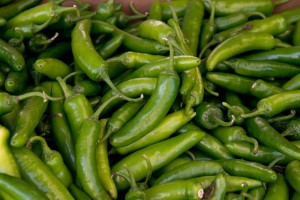 During a recent food preservation class, the topic of freezing vegetables came up. The big question of the day was “do you really always have to blanch vegetables before freezing them?”
During a recent food preservation class, the topic of freezing vegetables came up. The big question of the day was “do you really always have to blanch vegetables before freezing them?”
Today I want to share my answer to that question with you.
But first, a quick review.
Blanching is the process of quickly heating fresh vegetables in boiling water or steam. This process is recommended for almost all vegetables when you’re going to stash them in the freezer. The amount of time that you need in order to heat a vegetable depends on the type of vegetable, its shape, and its size. Visit the homepage for the National Center for Home Food Preservation to find a complete list of recommended blanching times. A quick dip in boiling water or steam is followed by an immediate ice bath, which stops the cooking process. And that’s blanching in a nutshell.
Now, is this step necessary? Can’t you just throw raw vegetables into the freezer?
For best flavor and texture, the answer is no. Blanching improves the quality of the frozen vegetables. Vegetables that have been blanched before freezing will have better color, texture, flavor, and nutrition over the long haul than ones that have not been blanched.
So, what about vegetables that aren’t blanched? Are they safe to eat?
There is nothing mysterious or dangerous about vegetables that have not been blanched before freezing. These vegetables are safe to eat. To blanch or not to blanch is a quality issue, not a food safety issue.
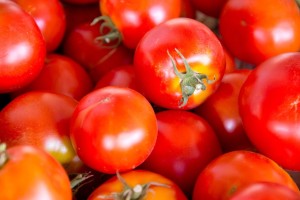 That being said, there are some foods that seem to freeze very well without blanching. Want to know what they are? The short list features tomatoes, onions, and peppers.
That being said, there are some foods that seem to freeze very well without blanching. Want to know what they are? The short list features tomatoes, onions, and peppers.
- Tomatoes can be frozen raw, either cut-up or whole. You can remove the skins, but if that feels like too much work, you can also freeze whole and well-washed tomatoes with their skins on. Thaw the frozen tomatoes under warm running water and the skins will slip right off. The texture of thawed tomatoes will be soft, but they can still be used for cooking.
- Do you have too many leftover chopped onions? I like to pack them up in ½ cup portions that are just right for soup or that work well as an addition to ground meat. Like tomatoes, frozen onions will have a softer texture, but they’re still good in cooked foods.
- Peppers can also be frozen without blanching. I like to freeze them in quarters or strips in single layers on a tray and then, once they’re solid, put them into freezer bags. This allows me to grab as many as I need for a recipe. If you have enough freezer space, raw peppers can be frozen whole and thawed just slightly to be used for stuffed peppers. Be sure to use freezer-quality bags or packaging — this helps keep the quality top notch (and it also keeps the pepper odors from transferring throughout the freezer).
Time is a critical component here. The longer an unblanched food is kept in the freezer, the lower its quality will be. Unblanched items should be used within 6 to 8 months of freezing.
By Cheryle Jones Syracuse, MS, Professor Emeritus at The Ohio State University
Here’s a free blanching handout that you can offer your clients today!
For more cooking and kitchen resources, check out these top-sellers from the Nutrition Education Store…



